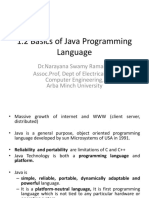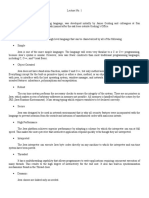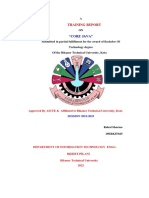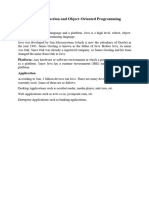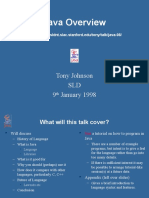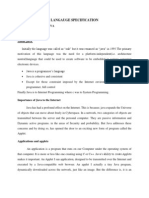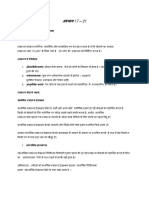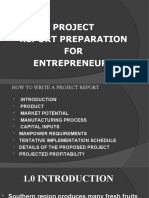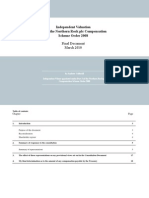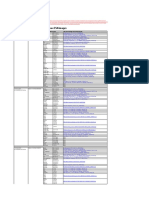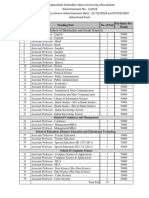0% found this document useful (0 votes)
13 views24 pagesJava
The document provides an overview of Java, including its history, features, and various editions such as J2SE, J2EE, and J2ME. It also covers Java development tools like JVM, JRE, and JDK, as well as Java Swing for GUI development and JDBC for database connectivity. Additionally, it mentions the widespread use of Java across various devices and the certification options available through Oracle.
Uploaded by
AlokCopyright
© © All Rights Reserved
We take content rights seriously. If you suspect this is your content, claim it here.
Available Formats
Download as PPTX, PDF, TXT or read online on Scribd
0% found this document useful (0 votes)
13 views24 pagesJava
The document provides an overview of Java, including its history, features, and various editions such as J2SE, J2EE, and J2ME. It also covers Java development tools like JVM, JRE, and JDK, as well as Java Swing for GUI development and JDBC for database connectivity. Additionally, it mentions the widespread use of Java across various devices and the certification options available through Oracle.
Uploaded by
AlokCopyright
© © All Rights Reserved
We take content rights seriously. If you suspect this is your content, claim it here.
Available Formats
Download as PPTX, PDF, TXT or read online on Scribd
/ 24







